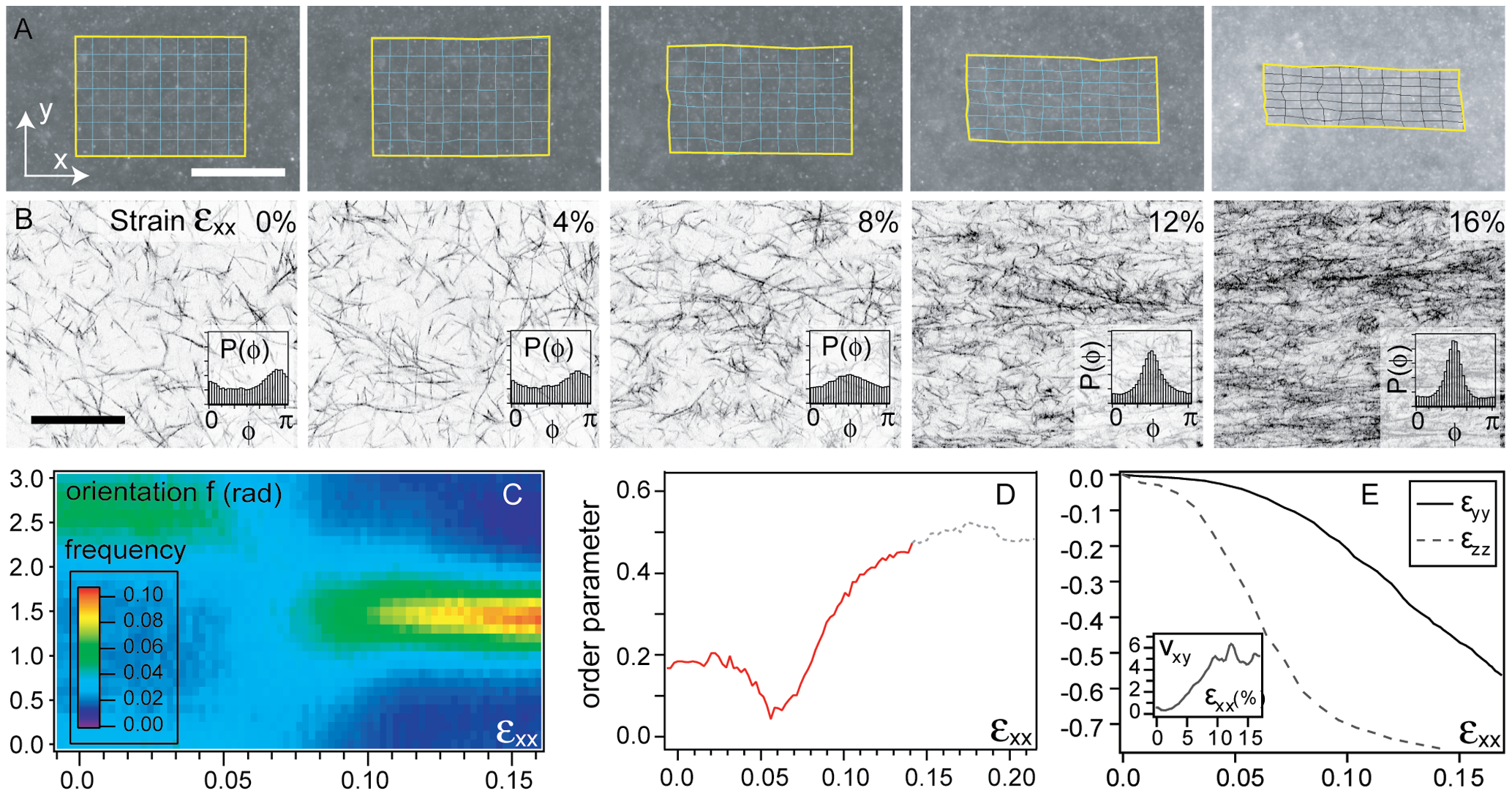
Citation
D. Vader, A. Kabla, D. Weitz and L. Mahadevan
PLoS ONE 4(6):e5902
Abstract
Abstract
Collagen is the most abundant extracellular-network-forming protein in animal biology and is important in both natural and artificial tissues, where it serves as a material of great mechanical versatility. This versatility arises from its almost unique ability to remodel under applied loads into anisotropic and inhomogeneous structures. To explore the origins of this property, we develop a set of analysis tools and a novel experimental setup that probes the mechanical response of fibrous networks in a geometry that mimics a typical deformation profile imposed by cells in vivo. We observe strong fiber alignment and densification as a function of applied strain for both uncrosslinked and crosslinked collagenous networks. This alignment is found to be irreversibly imprinted in uncrosslinked collagen networks, suggesting a simple mechanism for tissue organization at the microscale. However, crosslinked networks display similar fiber alignment and the same geometrical properties as uncrosslinked gels, but with full reversibility. Plasticity is therefore not required to align fibers. On the contrary, our data show that this effect is part of the fundamental non-linear properties of fibrous biological networks.
Figure sample

The two montages of 5 images each show, for two different 1 mg/mL samples and at various strains, (A) wide-field fluorescence images of beads embedded within the network - the super-imposed grid is the result of the tracking of the deformation field (scale bar 500 µm); (B) direct imaging of the fibers through CRLSM (scale bar 50 µm). In inset, each corresponding histogram, with angle values going from 0 to π. For the same samples depicted above: (C) represents the evolution of the orientation statistics; the color at each point corresponds to the relative count of fibers oriented along a specific direction at a given strain along x. (D) shows the order parameter resulting from the data in (C); the curve beyond 15% stretch is grayed out due to the lack of confidence of the order parameter when the high value of the density prevents a proper detection of the fibers (see Methods). (E) gives the deformations along y and z as a function of the local strain along x. In inset, the incremental Poisson ratio as a function of the imposed deformation.

